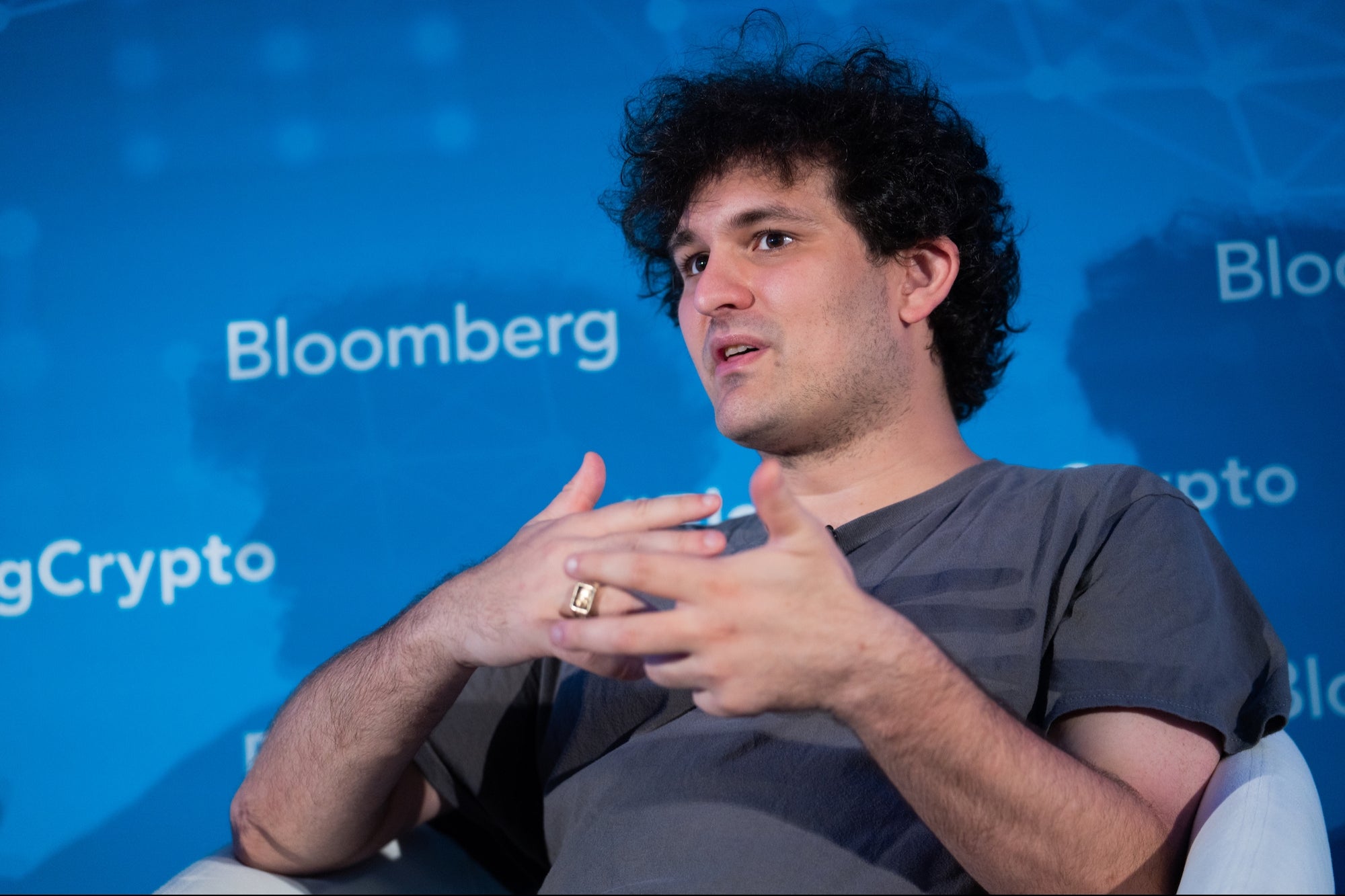
People are losing money — and faith — with crypto.

Bloomberg I Getty Images
Sam Bankman-Fried, the previously lauded billionaire and CEO of cryptocurrency exchange FTX, saw his fortune and confidence in his platform tumble after a CoinDesk article revealed that a company he also owned was heavily dependent on an asset without independent value, leading to panic from FTX customers and in the crypto world, in general, this week.
One fear was that FTX was not solvent, i.e., that customers would not be able to actually withdraw their coins from the platform. The CEO Bankman-Fried denied these rumors on Monday in a now-deleted Tweet.
In a surprising series of events, however, a competing company, Binance, then moved to rescue FTX on Tuesday — by buying it. Changpeng “CZ” Zhao, the CEO of the rival crypto exchange, tweeted Binance would buy FTX because it was having a “significant liquidity crunch.”
This afternoon, FTX asked for our help. There is a significant liquidity crunch. To protect users, we signed a non-binding LOI, intending to fully acquire https://t.co/BGtFlCmLXB and help cover the liquidity crunch. We will be conducting a full DD in the coming days.
— CZ Binance (@cz_binance) November 8, 2022
Then, in yet another surprising plot twist, news emerged Wednesday that Binance could back out of rescuing FTX — and potentially not support the platform’s customer assets as a result — after all, CoinDesk reported, citing an unnamed source.
The saga has been a bucket of cold water for crypto investors, says micro crypto influencer and longtime token-holder in the space, Tiffany Fong.
“It is shocking to see a company a lot of us looked at a hopeful and optimistic way have such issues and have such an illiquid balance sheet,” she said.
The anxiety inherent to the FTX episode can be traced back to the fall of fellow crypto exchange Celsius, which filed for bankruptcy in July, trapping the assets of its users, and the general decline of the value of cryptocurrency, which has been hammered by the instability of the wider economic environment. Bitcoin, a flagship coin, for example, has dropped 18% since the beginning of the FTX saga last week and has lost 65% of its value since the beginning of this year.
What’s going on with FTX?
FTX and Binance are both cryptocurrency exchanges. You can use them to swap a coin from one currency to another. Both also offer other types of products, like leveraged tokens, which are theoretically less risky crypto assets. Prior to Binance’s plan to buy the company, the companies were thought to be rivals.
Then, things started to get bad for FTX. Last week, CoinDesk published a story that noted a company very closely linked to FTX, Alameda Research, which is Bankman-Fried’s research firm, (it is like a crypto hedge fund of sorts that trades crypto assets on a larger scale and is not accessible to everyday retail investors) had a very large portion of its assets as the cryptocurrency coin FTX itself had created, called FTT.
There’s nothing “wrong” with that, as CoinDesk noted, but it’s as if all of your wealth is based on an asset (or, at least based on the documents the outlet had access to) that only has value because you say it does, as opposed to something with objective value on the market.
This spooked people. Fong said she had started to hear rumors on Twitter of the platform’s insolvency even before the article came out — and then, after the CoinDesk piece, Binance announced Sunday it would sell all of its FTT. Customers then began withdrawing money from FTX and people began to sell FTT, further driving down the price of FTT — and, theoretically, the value of Alameda.
Then, in an angel moment, rival trading platform Binance swooped in, and the two company leaders, Bankman-Fried and Binance CEO Changpeng “CZ” Zhao Tweeted Tuesday they had signed a non-binding letter of intent for Binance to acquire FTX. However, even since then, the Wednesday CoinDesk report, citing an anonymous source, said Binance is considering ditching the acquisition after getting a look at the company’s financials.
None of this bodes particularly well for people involved in FTX.
Bankman-Fried lost almost 94% of his fortune, some $14 billion, because of the debacle. Tom Brady publicly invested in FTX and was an influencer for the company, so the money he has put into the platform is also at risk, per Yahoo Finance.
It’s unclear how much Brady and his now ex-wife Gisele Bündchen, who also signed an endorsement deal with the company, sunk into FTX or how much they lost.
BREAKING: Crypto exchange FTX has announced an endorsement deal with Tom Brady & Gisele Bündchen.
Both Brady & Bündchen will receive equity in FTX and a signing bonus in crypto.
In total, FTX has committed to spending over $350M on sports partnerships in the last 6 months alone
— Joe Pompliano (@JoePompliano) June 29, 2021
Previously, FTX and Bankman-Fried were seen as the “white knights,” as Fong put it, as Bankman-Fried had dived to rescue via buying struggling competitor Voyager Digital. So, finding out FTX needed rescuing was disturbing, she added.
It is possible Brady and Bündchen could even face questions about how much they knew about shaky business foundations, as crypto-astrologer-influencer Maren Altman has about Celsius.
More official sources appear to be poking around as well. Bloomberg Law reported Wednesday that two U.S. government entities, the Securities and Exchange Commission and the Commodity Futures Trading Commission, are looking into FTX over questions about its liquidity.
No matter what happens, it has been a tough day for Fong, despite her longtime love for decentralized finance. Although she did not have any significant coins in FTX, Fong lost about $200,000 in the Celsius debacle, and that, combined with the FTX drama, has her questioning her confidence in some of the currencies.
After this, “people [are] losing faith in crypto as a whole,” she said.
